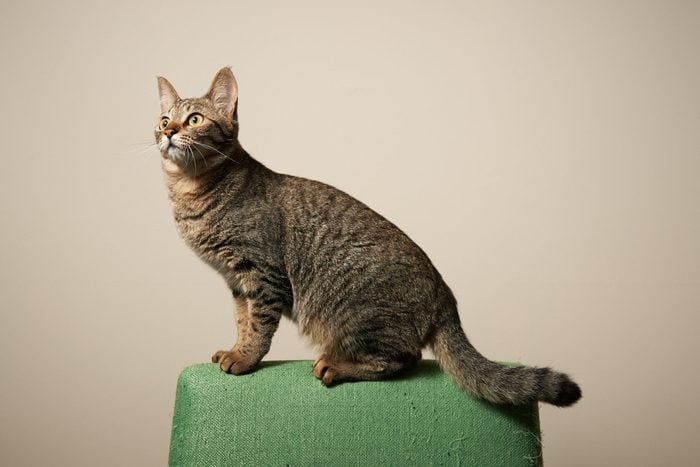
Pawtrait of a cat
You may think you know your cat as well as you know yourself. Maybe you even know how to train a cat. But the fact is, cats are naturally mysterious. Even if yours is one of the talkative types of cute cats who let you know when they’re hungry, tired, and everything in between, they still don’t tell you everything. Cats are like onions: Endless layers! Dogs are like open books: they’ll tell you all the dog facts you need to know upfront. So settle in with your best purry pal on your lap (you know you can’t move now, so you might as well read on) and prepare to discover things that will blow your feline-loving mind. Mr. Whiskers might even learn something about himself.
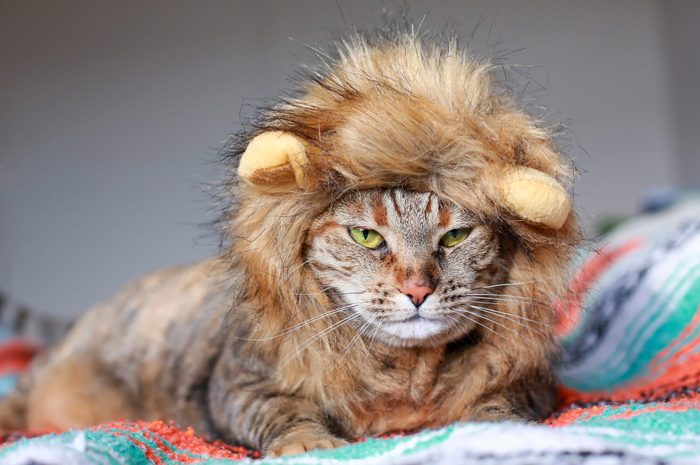
They’re basically little lions
We don’t use the term “big cats” to refer to animals like lions and leopards without good reason. Cats and tigers shared a common ancestor more than ten million years ago, but today’s house cats still share 95 percent of their genetic makeup with tigers. No wonder why the two exhibit many of the same behaviors, including scent marking, prey stalking, and pouncing.
RELATED: Decode Your Cat’s Behavior
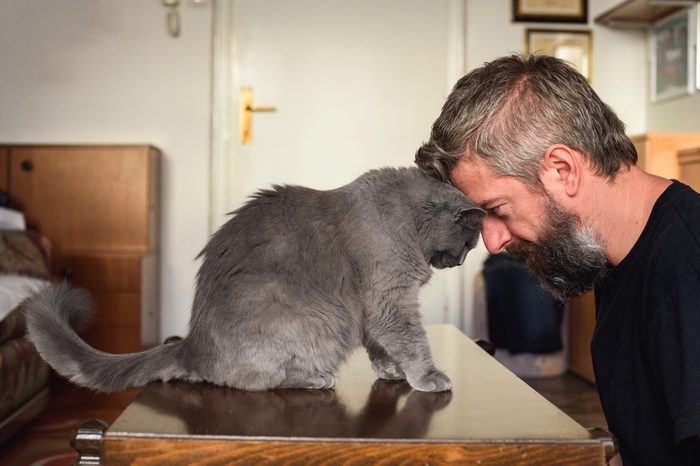
But cats’ brains are very much like ours
You and your kitty have a lot in common, starting at the top. Cats seem to think in much the same way that we do, largely because their brains have a similar structure to ours. Both human and cat brains contain grey and white matter, as well as similar regions and lobes. Cats dream just like we do, and they also have short- and long-term memory function.
RELATED: What Do Cats Dream About?
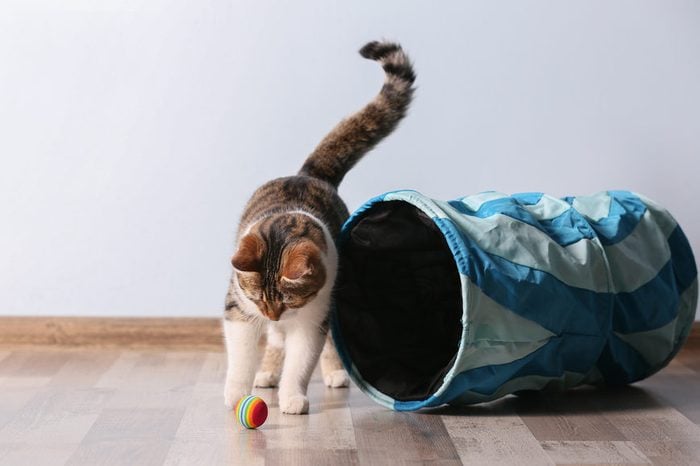
They’re not nocturnal, they’re crepuscular
The word nocturnal is thrown around a lot when referring to a cat’s sleeping schedule, but this isn’t quite factual. “Cats are crepuscular, not nocturnal. This means that they are most active during dawn and dusk,” says Jodi Ziskin, a pet coach in Northern California. “In the wild, this is their hunting time. Cats tend to exert a whole lot of energy during these hours: pouncing, playing, and even getting ‘the zoomies.’ It’s a great time to play with your cat and then reward them with a meal.” Enhance your play time by getting them one of these great cat toys!
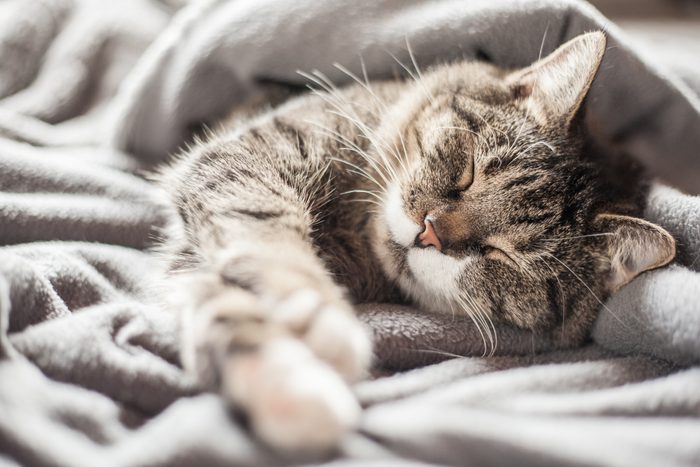
Your cat is supposed to sleep this much
Cats spend about two-thirds of their lives sleeping, or between 13 and 16 hours a day. (Jealous!) But this isn’t a sign of laziness. It’s typical behavior for predatory animals (like the other big cats they’re descended from) to sleep most of the day away. So, make your cat’s naps count.
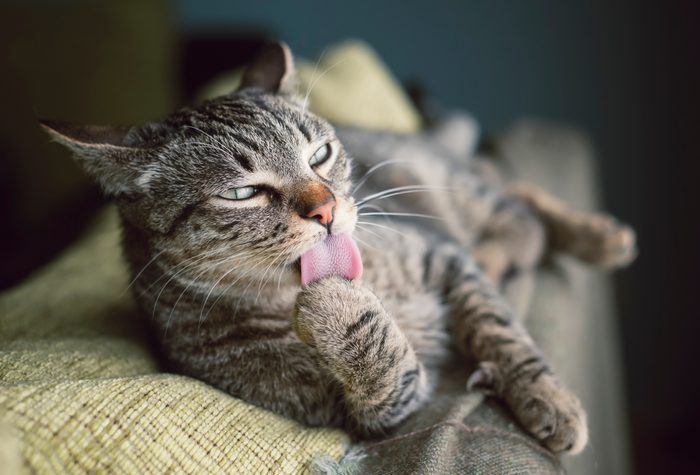
They spend most of their waking hours grooming
Cats spend as much as half of their days grooming themselves, but you can’t chalk this behavior up to vanity. Licking their fur helps to cool them down, promotes their blood flow, and distributes natural oils around their coats. It’s also thought that their saliva contains enzymes that serve as a natural antibiotic for wounds. Speaking of licking: here’s why cats lick you.
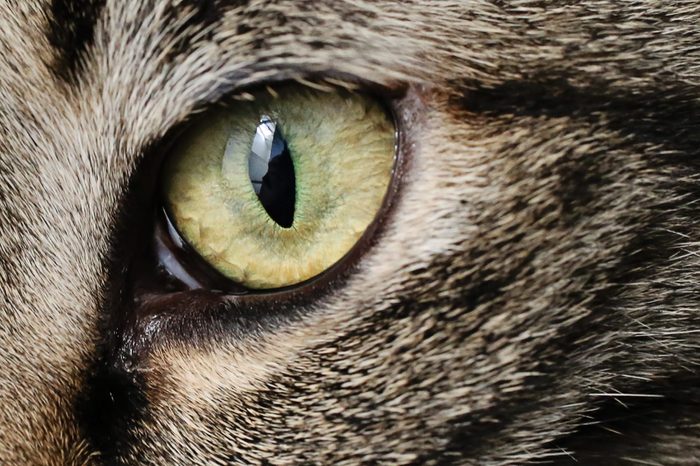
Their vision is almost like a superpower
“A cat’s peripheral vision occupies 200 degrees, which is 20 percent better than humans,” says Jackson Galaxy, a pet expert and the host of Animal Planet’s My Cat From Hell. ” Once they zero in on potential prey, all of their ocular skills come to the fore. Although they can’t see very well at great distances, the fact is that’s because they don’t need to. A cat relies on absolute accuracy once the prey is within hunting range, which is at around 20 feet away.” He adds that their night vision is also very good, and they can hunt in complete darkness with the same accuracy they have during the day. And we struggle to find our way to the bathroom at night!
RELATED: Can Cats See in the Dark?
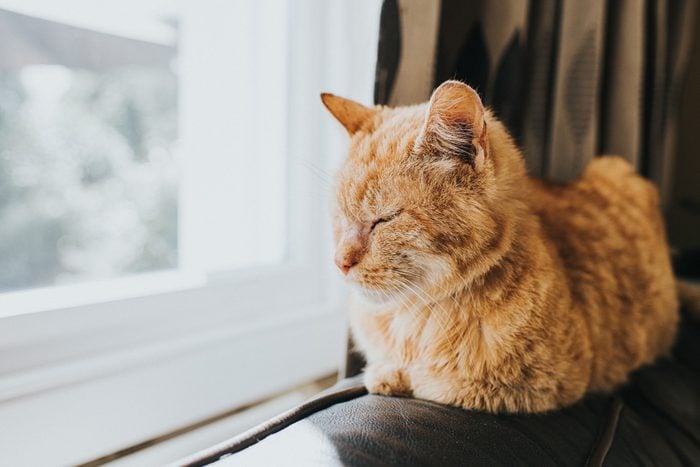
But your cat is practically legally blind
Cats are far-sighted, which means they have difficulty focusing on objects that are immediately in front of them. Their close-up vision is about 20/100 on the human vision scale, which is at the borderline of legal blindness. Cats also have a blind spot right in front of their faces, which is why your kitty keeps missing the treat you put right under his nose.
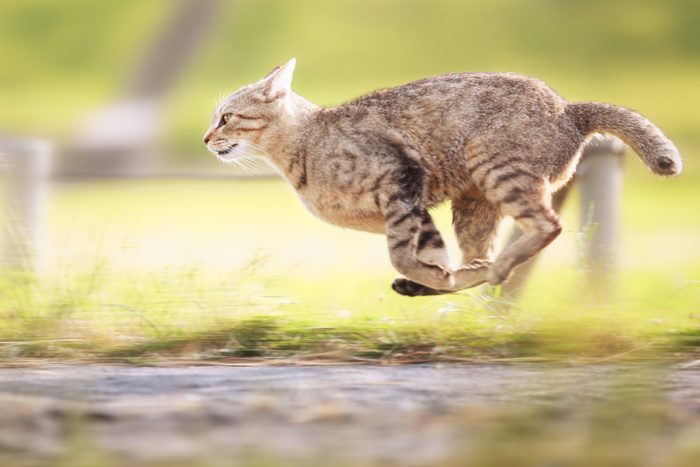
Cats would qualify for the Olympics
If you’ve ever seen a cat run, you know they are super speedy. But here’s a cat fact worthy of a gold medal: Cats top out at around 30 miles per hour, which means they could beat Usain Bolt at the 200-meter dash. And that’s without conditioning or carb loading!
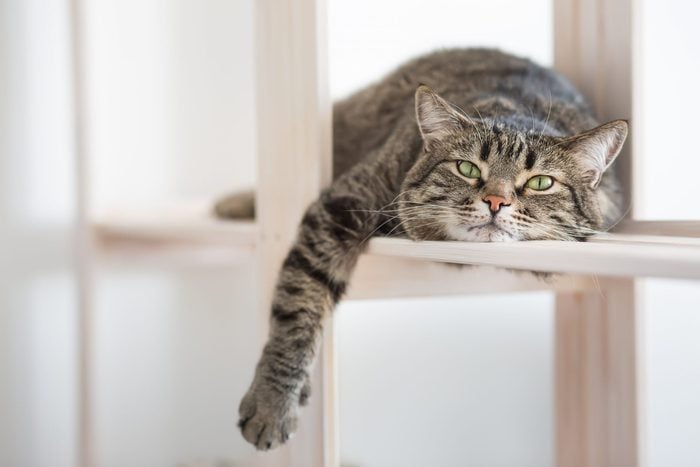
They’re pretty good actors, too
“Cats are expert hunters and believe it or not, great mimics,” says Jessica Watson, a pet expert and team leader of the cat department at Best Friends Animal Society’s no-kill shelter. “You may have seen viral videos of cats barking or saying ‘no’ or ‘hello.’ Cats use this same ability to help hunt birds. Cats will chirrup or tweet to mimic bird calls or other sounds of prey, so they can hide in a bush and lure prey close enough to pounce.” Here’s how to tell how smart your cat is—the signs are pretty interesting!
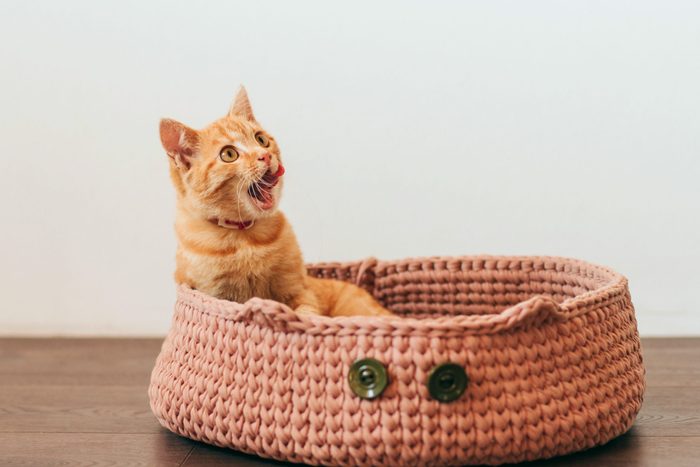
You can guess a cat’s personality based on its coloring
They say you shouldn’t judge a book by its cover, but you might just be able to do that with a feline. “Cats with more coat colors—like tortoiseshell (“torties”) and calicos—tend to have more challenging personalities,” says Jess Trimble, DVM, a veterinarian with Fuzzy Pet Health in the San Francisco Bay area. “A study published in the Journal of Applied Animal Welfare Science polled pet owners about their cat’s attitude and found that cats with the calico and tortoiseshell patterns had higher levels of aggression toward humans.”
RELATED: Signs Your Cat is Mad at You
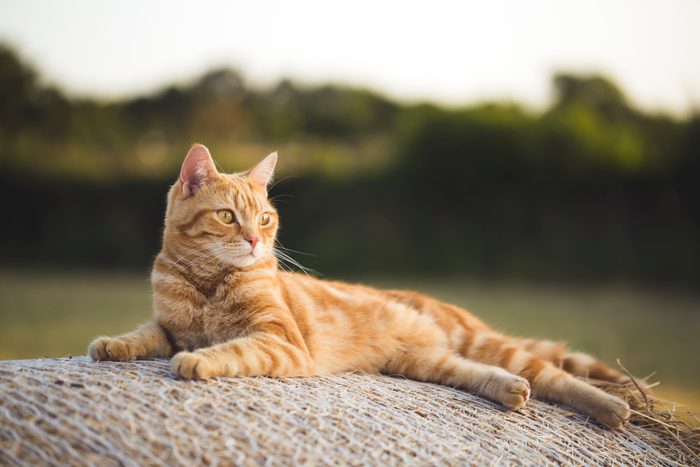
And an orange coat might reveal political aspiration
An orange tabby became mayor of a small Alaskan town called Talkeetna after running uncontested. Mayor Stubbs (named so because he doesn’t have a tail) held the office for 20 years! And while he didn’t wield any real governmental power, his approval ratings were high among locals and tourists alike. Talk about cattitude.
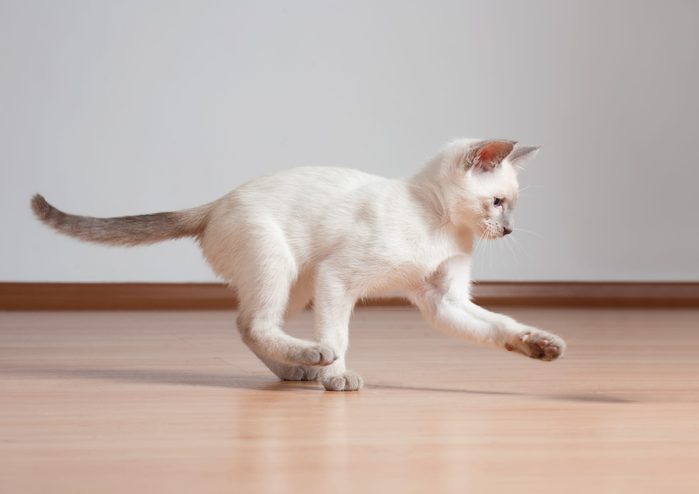
Their vocabulary consists of over 100 different sounds
We often think of our cats as being quiet except for the occasional (or frequent) meow, purr, or hiss, but in reality, they’ve got a pretty expansive vocabulary. “Cats can make more than 100 vocalizations ranging from a general cry to growl to different variations of meowing,” says Ziskin.
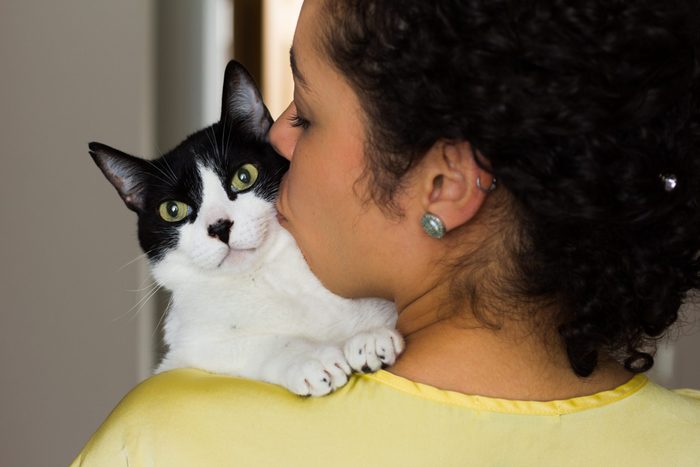
Cats have distinct sounds for their owners
Speaking of cats making sounds, they can also develop an entire “language” in order to communicate with their owners, notes Watson. “Each cat will develop a series of meows or sounds unique to their owner, similar to how dogs can learn different command words based on their trainer,” she explains. “Because of this, those that talk to their cat are more likely to have a cat that will be rather vocal.”

Your cat’s heart beats nearly twice as fast as yours
That translates to 140 to 220 beats per minute. Don’t be alarmed if your kitty’s heart rate is on the high end of that range at the veterinarian’s office. (Cats typically don’t like vet visits, so their hearts tend to beat faster there.) To check your cat’s pulse at home, put your hand over his left side, behind his front leg. You should be able to feel his heart pulsing with your fingers. Count the number of beats you feel in 15 seconds, then multiply that number by four to get the total beats per minute.
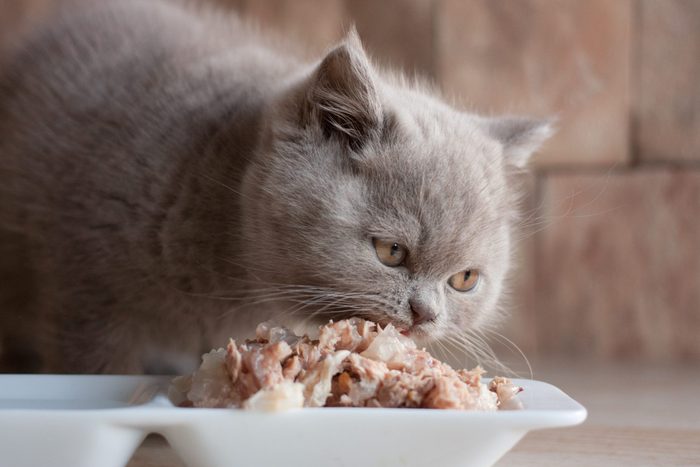
Cats have way fewer taste buds than humans
Here’s another fun cat fact: felines only have 470 taste buds, which is quite a difference compared to humans who have 10,000 and even dogs, which have 1,700. “Because cats are obligate carnivores (which means they must eat meat in order to survive and have a difficult time digesting plants), they do not need as many taste buds as herbivores and omnivores because their diet is not meant to be varied,” says Ziskin. “Plant eaters, on the other hand, need more taste buds to differentiate between toxic and beneficial plants.”
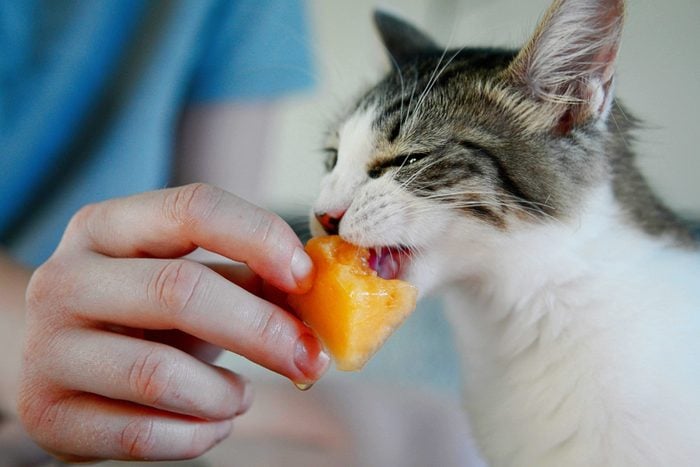
They’ve got a thing for cantaloupe
“Although obligate carnivores, many cats love to eat cantaloupe, as well,” says Ziskin. “The main reason is that many of the amino acids in meat are also in cantaloupe. So, to cats, cantaloupe smells like meat!”
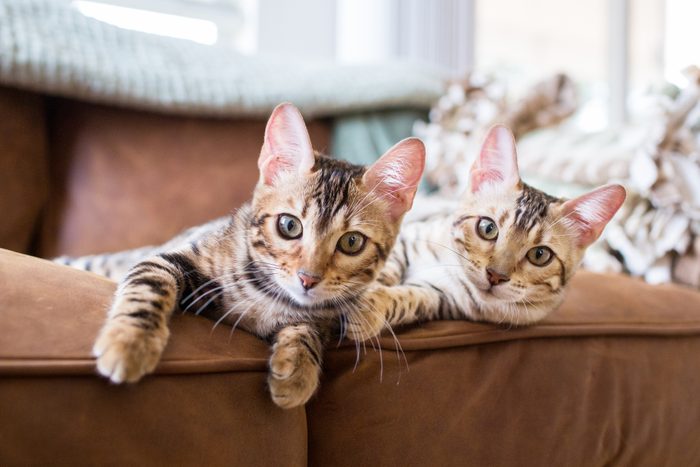
Most cats are lactose-intolerant
Even though they’ll lap milk up, cats can’t digest lactose after they’ve been weaned. Instead, it ferments in their stomachs and causes unpleasant tummy aches, stomach cramps, and might even cause diarrhea or vomiting. So, you’ll at least know within a few hours if your kitty really can’t tolerate milk.
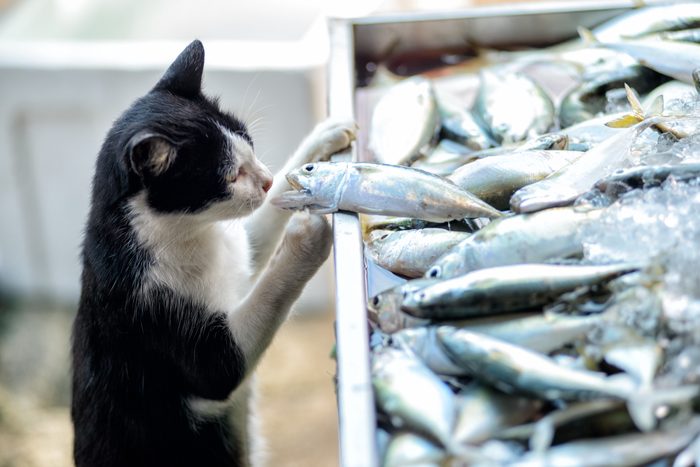
Cats also shouldn’t eat raw fish
Here’s yet another “delicacy” that isn’t good for cats (even though certain cartoons would lead you to believe otherwise). The danger of raw fish for cats is similar to that for humans: uncooked fish can contain bacteria and cause food poisoning. There is also an enzyme in raw fish that destroys thiamine, an essential B vitamin, which can cause neurological problems.
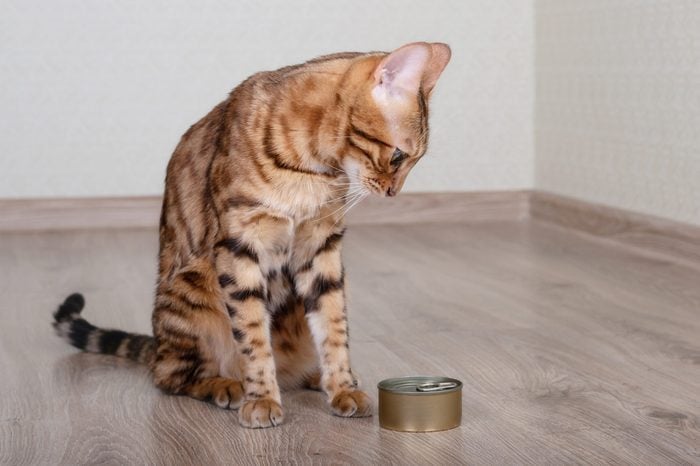
Your cat might be a tuna addict
Tuna is a great treat, but too much of it can be detrimental to your cat’s health, so don’t spoil them too much! Cats can actually become addicted to the strong taste and flavor of tuna and ultimately refuse to eat anything else. These “tuna junkies” end up suffering from malnutrition, since tuna alone doesn’t contain all of the nutrients a cat needs.
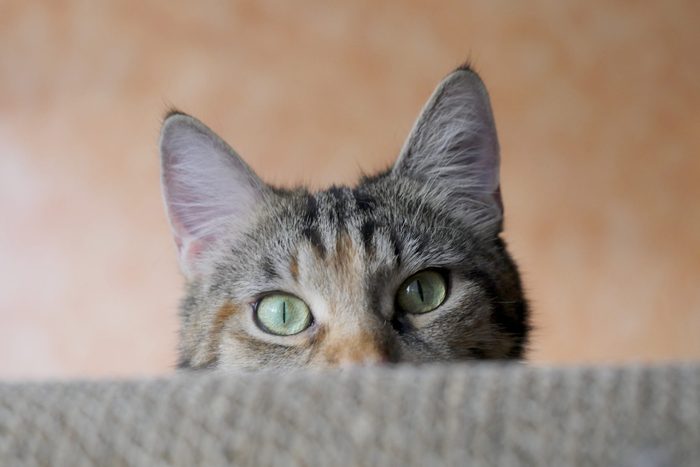
They have crazy control over their ears
Most humans fail miserably when it comes to even trying to wiggle our ears, and cats have us completely beat. “The cat’s pinna—the triangular part of the ear that we can see—help give them the leg up on other species, acting as part radar dish and part catcher’s mitt. The shape of the pinna creates a unique funnel, grabbing sounds from the air and pulling them inward,” says Galaxy. The coolest part of this feature? The pinnae can move independently of one another and almost completely behind their head. Yep, 180 degrees rotation—and that’s thanks to the collective work of 32 tiny muscles.
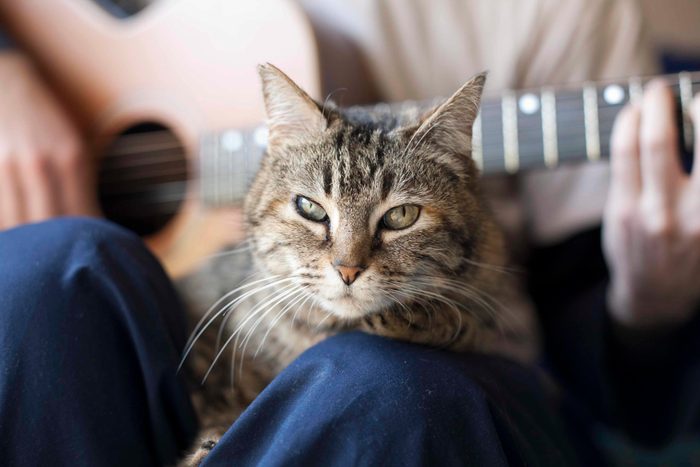
Cats probably hate music
With such spectacular ears, you’d think cats would enjoy music. And they do—just not our music. Researchers at the University of Wisconsin found that cats respond better to songs composed specifically for them, based on their frequency range and communication tempos. Composer David Teie wrote the music for the study and released an album, Music for Cats, in 2015.
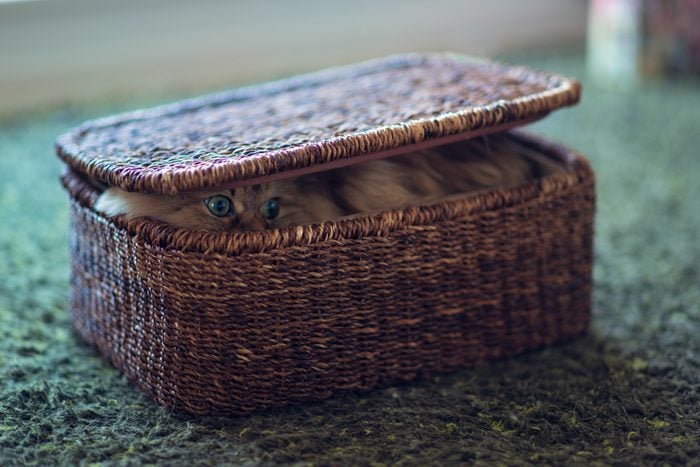
Your cat’s body is made for squeezing into tiny spaces
Cats have free-floating collarbones, meaning their collarbones aren’t really attached to anything. This physiological fact allows cats to fit through openings as small as their heads. But cats aren’t just good at fitting into tiny spaces, they also love being tightly enclosed for the feeling of security.
RELATED: Why Cats Love Boxes
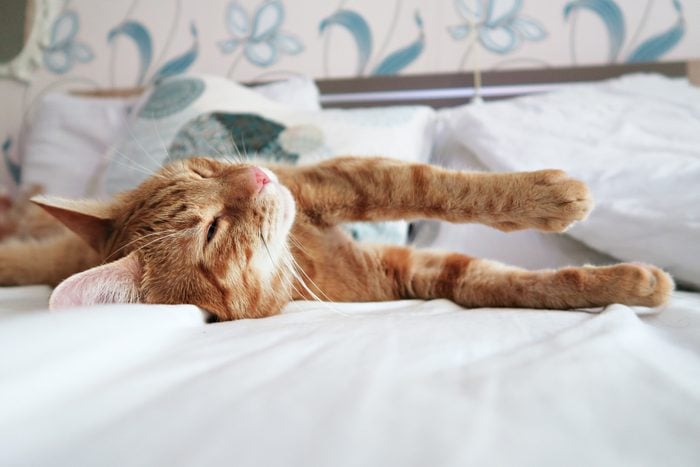
Purring remains a mystery
Science still doesn’t know why cats purr, but one theory is that the sound frequency of purring might improve their bone density. “Because cats have adapted to conserve energy via long periods of sleep,” says Leslie A. Lyons, assistant professor at the School of Veterinary Medicine at the University of California, Davis, “it is possible that purring is a low energy mechanism that stimulates muscles and bones without a lot of energy.”
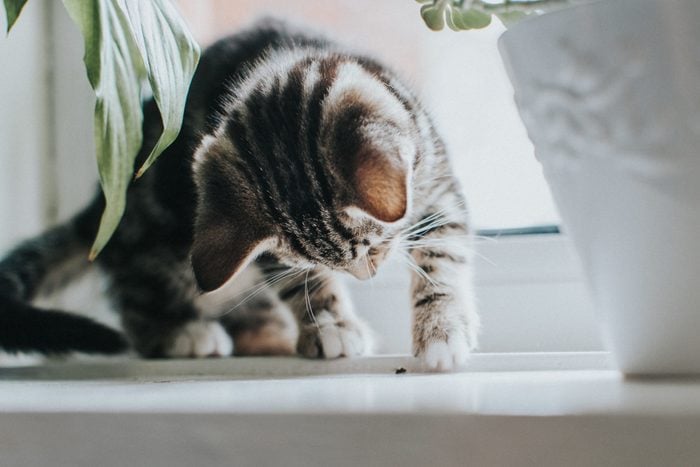
They’re not torturing that small creature
“When you see a cat batting around a bug or a small creature, they are not torturing it. They are being cautious,” says Ziskin. “These little insects, reptiles, and rodents can either bite or sting a cat. Instinctually, they do everything they can to avoid this.” That’s one cat fact that should bring you a little peace of mind!
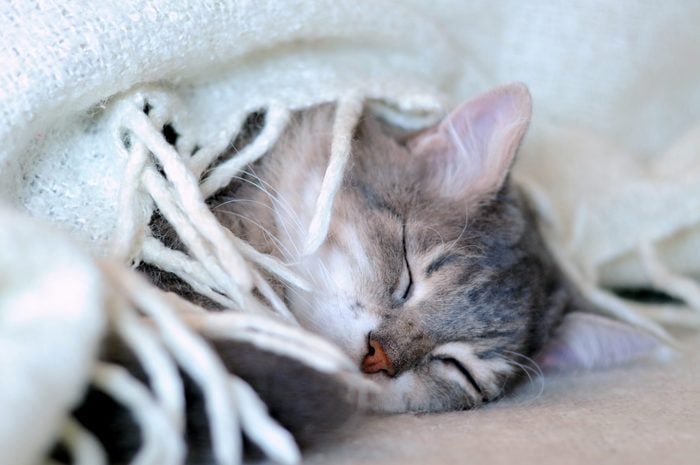
Cats domesticated themselves
While dogs were brought into homes and selected based on tasks they could perform, like hunting and guarding, one fun fact about cats is that they weren’t brought in so much as they cohabitated. “After living alongside humans, they realized that we wouldn’t kick them out of our homes and then invited themselves right in,” says Watson. “This is why cats are still so easily adaptable to outside life, and why socialization within the first 8 to 12 weeks of a kitten’s life is crucial to determining the demeanor and sociability of the cat.”
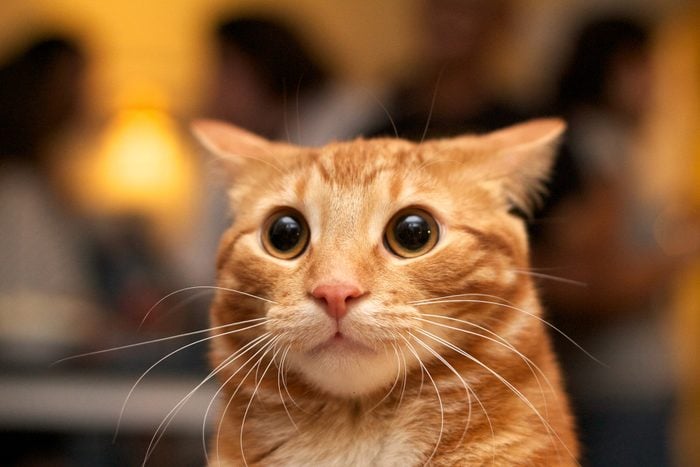
Cats have been pets for almost 10,000 years
Back in 2004, French archeologists discovered a 9,500-year-old cat grave in Cyprus. The find delivered a huge blow to the prevailing idea that it was the Egyptians who first domesticated the cat since this fmjeline predated Ancient Egypt by more than 4,000 years.
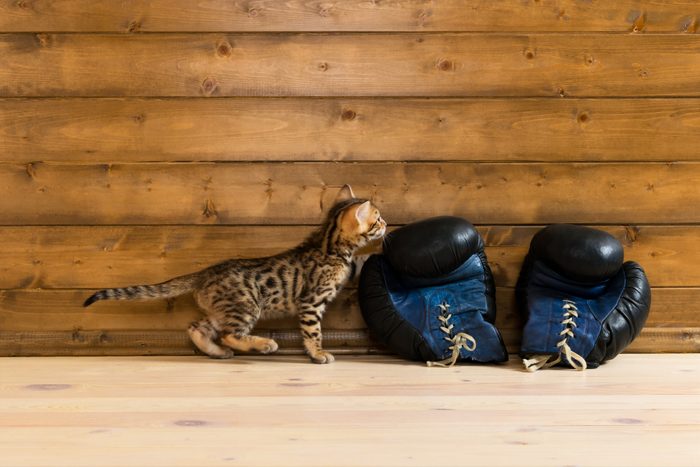
Cute cat videos are also a lot older than you think
After inventing the lightbulb, Thomas Edison made perhaps his second biggest influence on modern society when he filmed two cats “boxing” inside a ring. The footage, shot in 1894, is history’s first example of a cute cat video, though it didn’t go quite as viral as those of today.
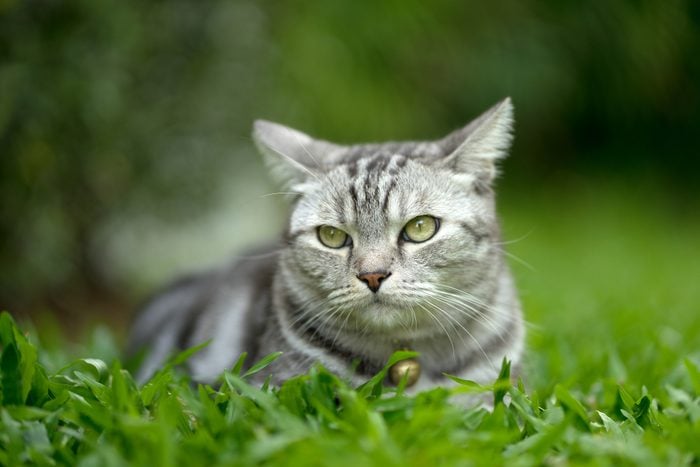
One cat lived to be 38
A dearly departed kitty named Crème Puff holds the Guinness World Record for the oldest cat to have ever lived. Born in 1967, the cat was three days into his 38th year when he died in 2005. His owner, Jake Perry, also owned the previous oldest cat, who passed away at the ripe old age of 34.

The way cats age is complicated
It’s not as easy as a dog’s seven years to a human’s one. In terms of development, the first year of a cat’s life is equivalent to the first 15 years of a human’s. Then its second year is equivalent to about ten more of our years, making a kitty roughly 25 (in human terms) after only two years. Beyond that, each year of a cat’s life is equivalent to about seven more human years.
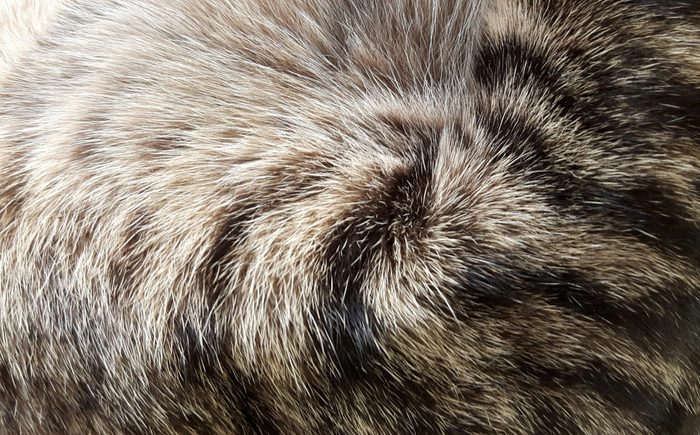
Cats have four different types of hair
Cats have four types of hair, including down, awn, guard, and vibrissae hairs. Guard hair is the outer layer and down hair is the super-soft, super-short undercoat. “The awn hairs are longer than the down hairs but shorter than the guard hairs, and they help to protect the coat and down hairs. They also generally contain most of the coloring and patterning that makes the cat’s coat what it is,” says Watson. “Vibrissae are the whiskers.”
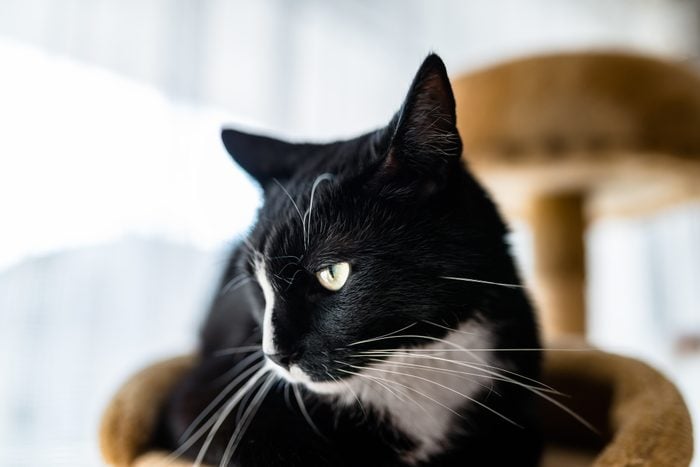
They’ve got more whiskers than you thought
One of a cat’s defining features is its long whiskers that shoot out from either cheek. But why do cats have whiskers? “Cats have whiskers on their upper lip, chin, above their eyes, on the back of their legs, and on their backs,” says Ziskin. “Whiskers help cats ‘see,’ in a way. They vibrate from touching an object or from a change in airflow, which sends a signal to the nervous system that helps determine the size, shape, and speed of what is around them.”
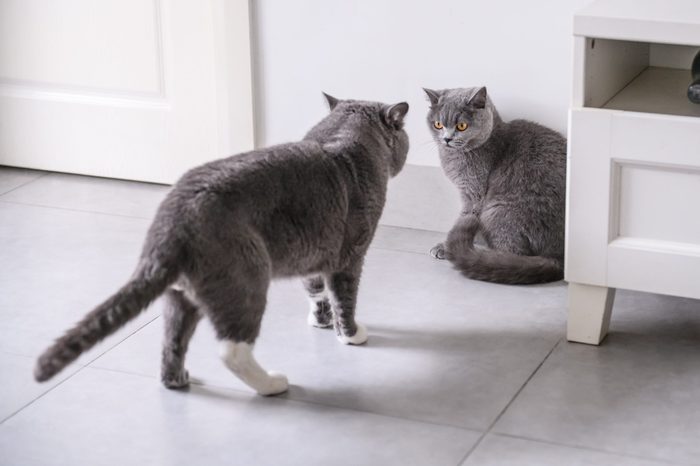
They’re basically everywhere
“Cats almost rule the world,” says Watson. “Of the seven continents on Earth, only one of them doesn’t have cats.” Can you guess which it is? That’s right—Antarctica! Interestingly, there are only 42 different pedigreed cat breeds (compare that to dogs, which have 340 pedigreed breeds).
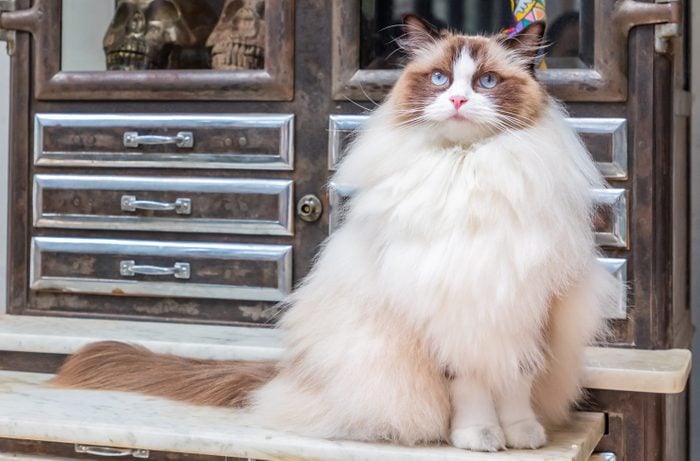
The Ragdoll is the most popular cat breed
According to a survey conducted last year by The Cat Fanciers’ Association, the Ragdoll is the most popular pedigreed cat breed. Its plush fur and huge eyes—paired with an affectionate personality—help explain its wide appeal. The next two most popular breeds were the Exotic and the British Shorthair.
RELATED: Friendliest Cat Breeds
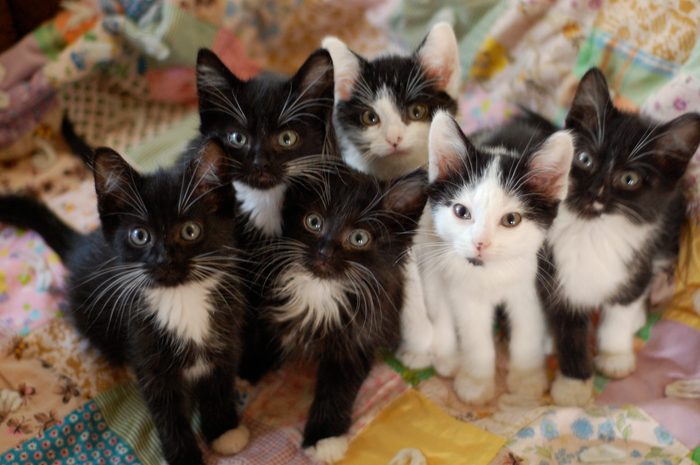
A group of kittens is called a kindle
Amazon didn’t invent the term, which has referred to a group of kittens long before it has to an e-reader. A kindle specifically means kittens from the same litter, all born to the same mother. The term “clowder” describes a group of adult cats, not necessarily related to each other. Can’t get enough kittens in your life? Then you’ll love these pictures of cute kittens!
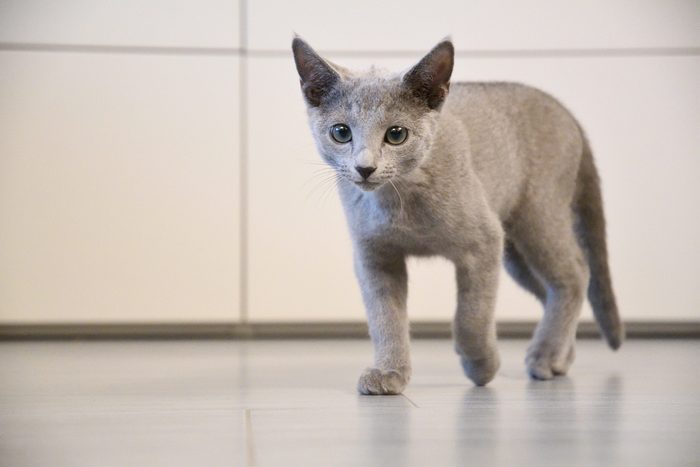
There’s a reason why they walk so quietly
Ever had a cat sneak up behind you? They’re really good at it—just be happy you’re not their prey! “Cats are digitigrade, which is to say that they naturally walk on their tiptoes,” says Galaxy. “This helps them come up on their prey with a combination of speed and near-silence—and a digitigrade stance helps provide cats with shock absorbers when they jump down from a height.”
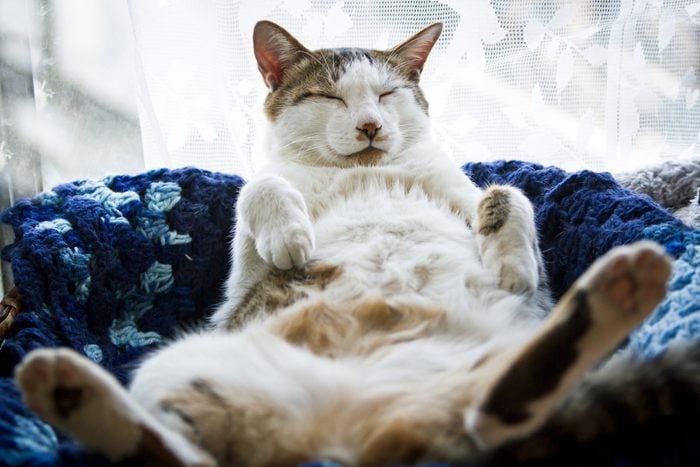
Cats have fewer toes on their back paws
Ever notice this about your kitty? A typical cat will have five toes on each front paw and only four toes on each back one. But cats (just like people) are sometimes born with additional appendages. The cat with the most toes had 28—and there have actually been two cats with this unique trait!
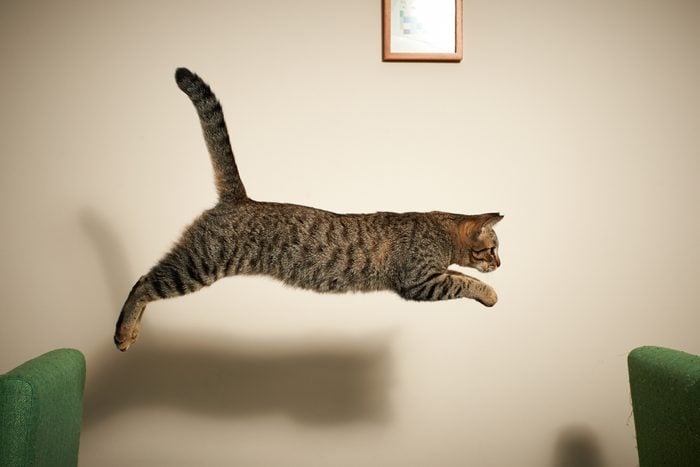
They don’t always land on their feet
While cats do have a great sense of balance, the notion that they always land on their feet simply isn’t true. The reason why they typically stick the landing, though, is that they have flexible backbones which they can twist mid-air when falling. Cats also spread their legs on their way down, which has a parachute-like effect and softens their falls.
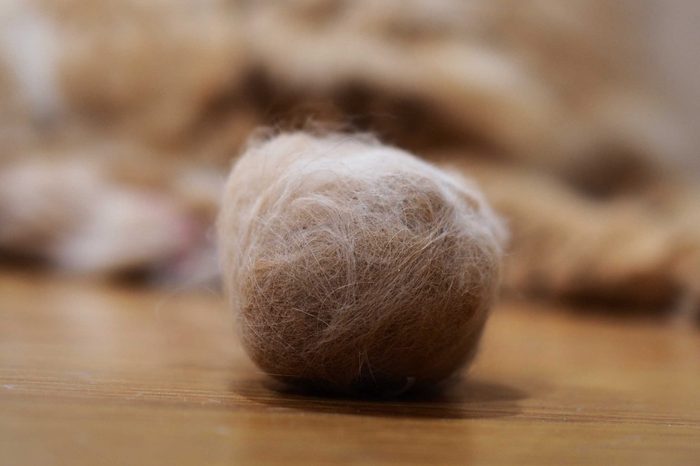
Having hairballs all the time isn’t normal
We often associate hairballs as a non-issue with cats, but hacking them up all the time isn’t normal. “Less than one a month can be normal for long-haired cats. More frequently than that, and you should chat with your veterinarian,” notes Dr. Trimble. “Frequent hairballs can be a sign of disease in the gastrointestinal tract that is preventing the hair from moving through normally, or a sign of over-grooming due to allergies, parasites, stress, or other reasons.”
RELATED: Why Does My Cat Have Anxiety?
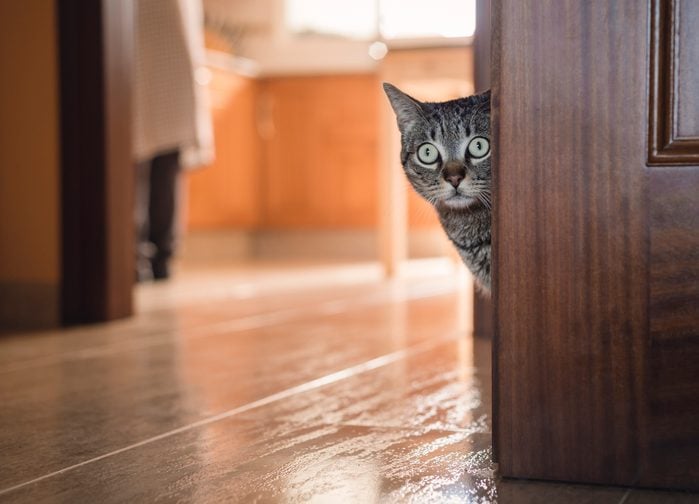
Your cat might be allergic to you
While it typically works the other way around, there are plenty of potential allergens in your home that may be bothering your feline friend: dust, dandruff, and cigarette smoke, to name a few. One in 200 cats is believed to have asthma. Indoor cats are particularly vulnerable.
RELATED: Houseplants Cat Owners Should Avoid
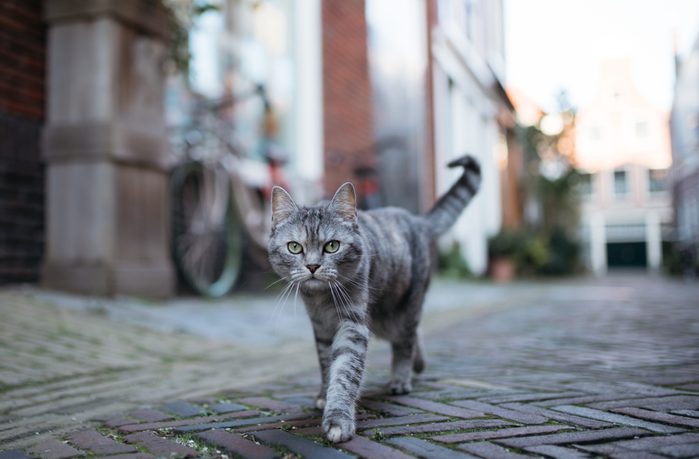
The way they walk is pretty unique
Like camels and giraffes, cats walk by moving both of their right feet first, then both of their left feet. This walking sequence moves half of their body forward at once. The pattern is so unique, camels and giraffes are the only other animals that walk this way.
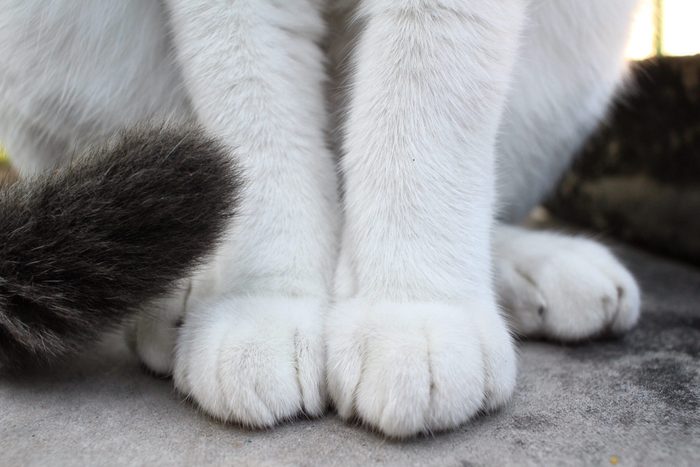
Their feet are super sensitive
Speaking of paws, another fun cat fact is that felines have super sensitive feet, which is why they really aren’t a fan of you touching them. Galaxy says, “The pads on a cat’s paws are completely uncalloused, hairless, and chock-full of nerve receptors. That level of sensitivity allows for processing info like temperature, pressure, even vibration to size up nearby prey through the ground. Now that’s a refined sense of touch.”
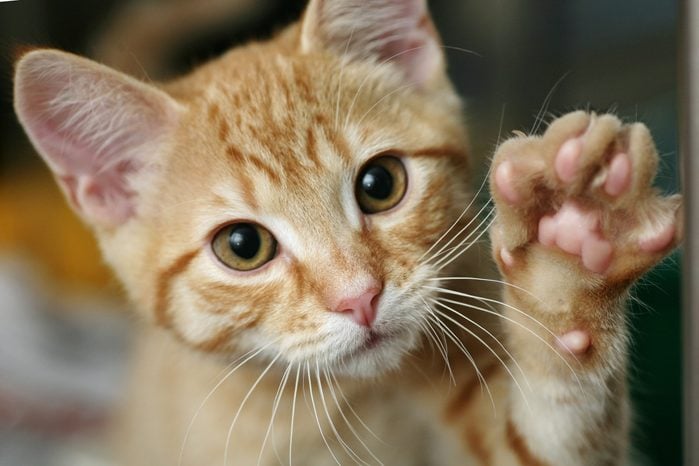
Your cat has a preferred paw
Just like people are right- or left-handed, cats are right- or left-pawed. One study published in Animal Behaviour tested 42 cats, half male and half female, and found that a cat’s dominant paw is correlated with gender. Male cats tend to be left-pawed and female cats are typically right-pawed.
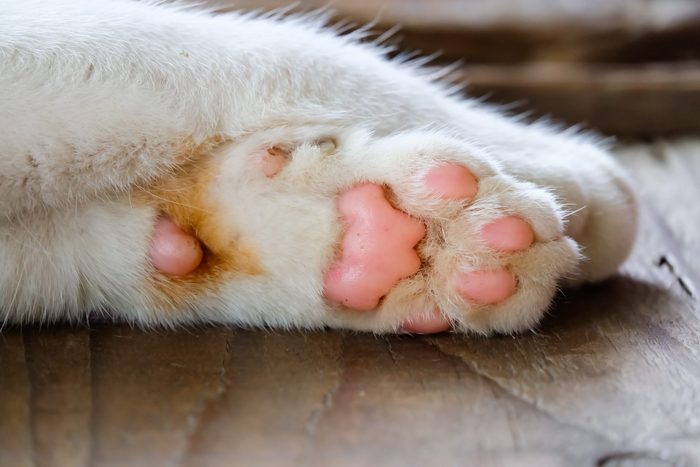
Their paws and claws contain scent glands
Cat claws come in handy for so many things, from grabbing onto a tree for a vertical escape to helping ward off enemies. “Also, claws and the scent glands between the paws, come together as one of the ways that cats claim territory,” says Galaxy. “By scratching a tree, for instance, they are leaving both a visual and scent marker that makes their ownership unmistakable to potential intruders.” No trespassing, indeed.
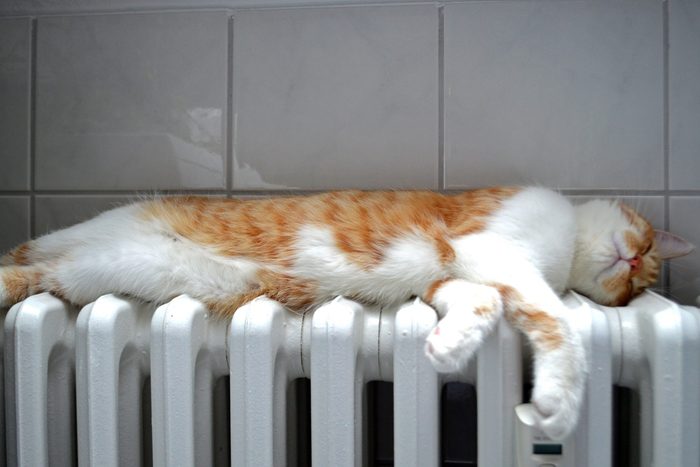
Cats run a higher temperature than humans
You may have noticed that your cat feels warmer than you. This doesn’t mean they’re sick with a fever—it’s just their normal temperature. “A cat’s normal body temperature is between 100 and 102 degrees. This is one of the reasons cats seek warmth. It helps maintain their ideal temperature,” says Ziskin.
RELATED: Silent Signs Your Cat Is Sick
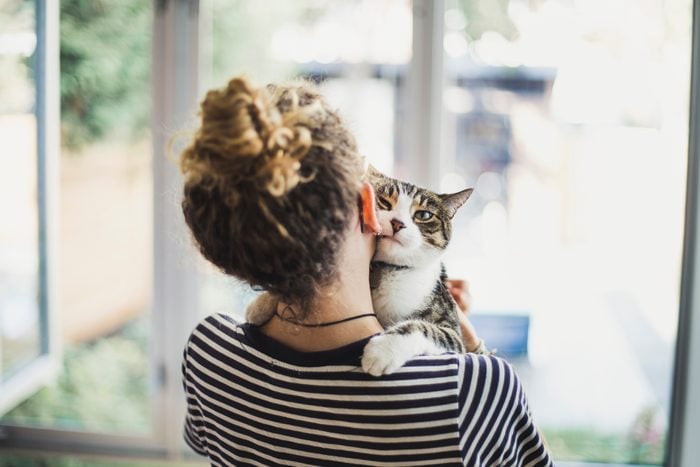
Cats may think of you as their territory
One explanation for why cats “knead” (when they rub their paws against something—or someone) is that cats use the scent glands in their paws to mark their territory. But kittens also knead their mothers’ bellies to stimulate milk production, so it’s possible that this is simply a behavior they carry into adulthood.
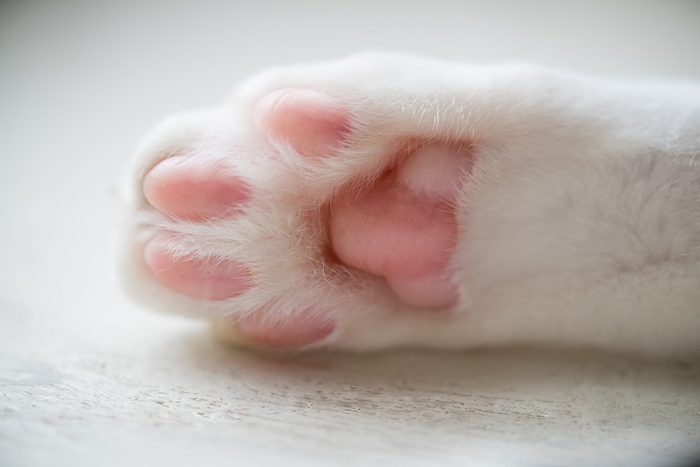
Cats only sweat through their paw pads
Another fun fact about cats is that, like dogs, they don’t sweat the way humans do. Instead, cats sweat through their paw pads. “If you notice sweaty paw pads, look for signs of overheating or stress,” notes Dr. Trimble. “It’s hard to regulate your body temperature when you only sweat through your feet.” She adds that the sweat could also be due to nervousness.
RELATED: Cat Owner Mistakes
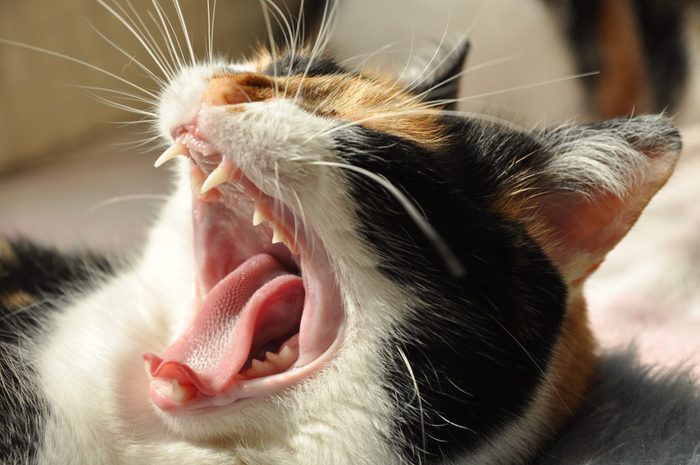
They don’t have a sweet tooth
We humans love our dessert, but cats can do without. “Cats—from house cats to tigers—lack the gene needed for tasting sweets. No sweet teeth for our kitties,” says Dr. Trimble. More candy for us, then!
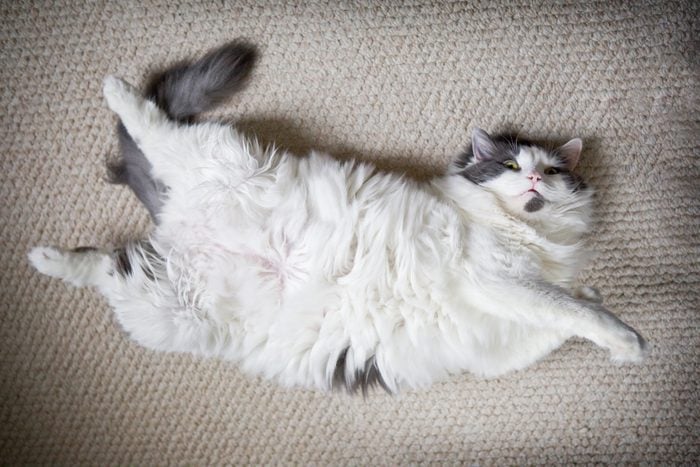
Your cat’s tummy is a spare tire of sorts
If you notice a little belly on your kitty, it doesn’t necessarily mean you’ve been doling out a few too many treats. That extra cushioning serves a couple of purposes, including protecting your cat’s vital organs in fights with other cats and allowing them to move more by extending when they’re chasing prey.
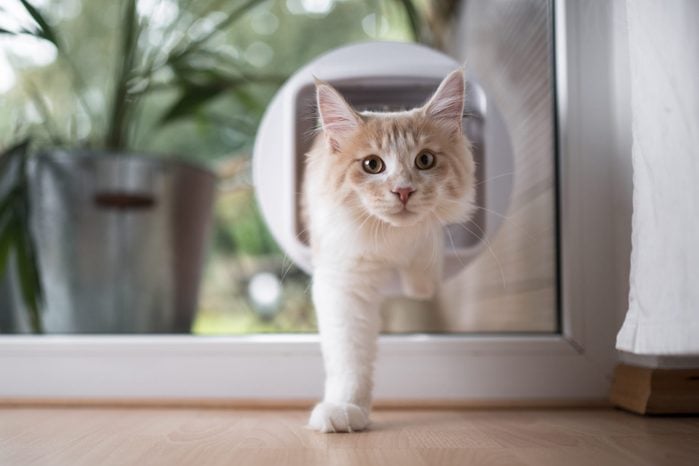
Isaac Newton may have invented the cat door
It’s not as revolutionary as discovering the laws of gravity, but the cat door is still a very useful human realization. According to one account, while conducting experiments at the University of Cambridge, Newton kept getting interrupted by his cats clawing at the door. So, he had a carpenter saw two holes which can still be seen at the university today.
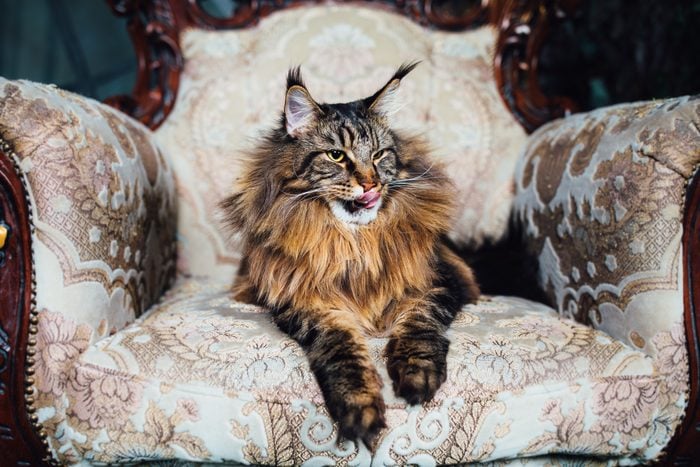
The world’s wealthiest cat had nearly $13 million
When British antiques dealer, Ben Rea, died in 1988, he left nothing to his family and instead bequeathed nearly his entire fortune to three cat charities. The money came with the condition that they had to look after his last surviving cat, Blackie, who still holds the record as the world’s wealthiest cat.
Next: Cat Trivia Quiz
Sources:
- Time.com: “Your Cat is 95% Tiger”
- Petful.com: “How Does a Cat Brain Compare?”
- Jodi Ziskin, pet coach and nutrition consultant at Healthy Pet Coach
- Jackson Galaxy, pet expert and host of Animal Planet’s My Cat From Hell
- Petfinder.com: “Cat Behavior”
- Jessica Watson, pet expert at Best Friends Animal Society
- Jess Trimble, DVM with Fuzzy Pet Health
- The Journal of Applied Animal Welfare Science: “Coat Color and Behavior”
- Prestige Animal Hospital: “Cats and Cow’s Milk Don’t Mix”
- VetStreet.com: “How Quickly Should My Cat’s Heart Beat?”
- AllThatsInteresting.com: “Mayor Stubbs the Cat”
- GuinessWorldRecords.com: “Oldest cat ever”
- Scientific American: “Why Do Cats Purr?”
- PBS: “Cats don’t like human music”
- Cat Fanciers’ Association: “Most Popular Breeds 2019”
- CBS News: “Minnesota feline ties record for most toes on cat”
- Animal Behaviour: “Spontaneous Behaviours in the Domestic Cat”
- GuinnessWorldRecords.com: “Wealthiest Cat”
